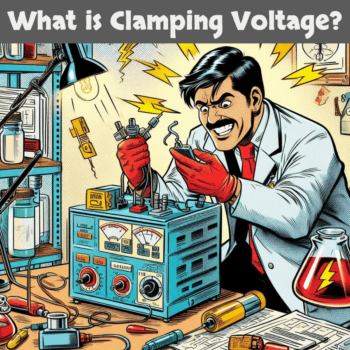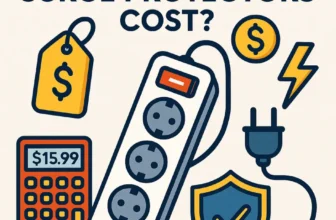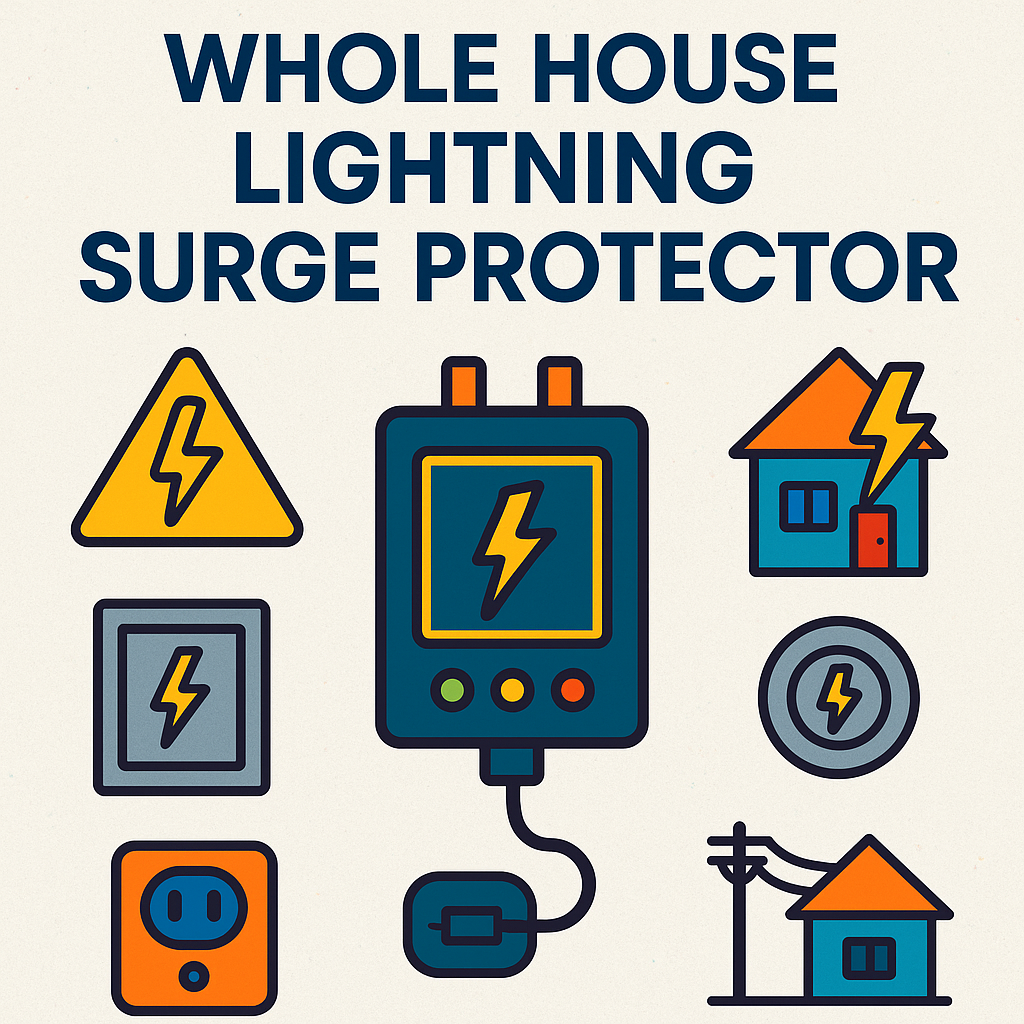Published By: Sean Hudson | Last updated on June 15, 2025 and reviewed by Editorial Team

Clamping voltage, also known as surge protection voltage, is an important concept in electrical circuits and surge protectors. It refers to the maximum voltage that can pass through a circuit breaker or surge protector before it limits further voltage transmission. This technique is widely used in modern electrical equipment to safeguard against electrical surges, which can cause damage to devices and pose safety risks.
In this article, we will explore the definition and explanation of clamping voltage, its importance in electronics, and its relationship with surge protectors. We will also highlight the limitations and considerations of clamping voltage to ensure proper usage and optimization of surge protection systems.
What is Clamping Voltage?
Clamping voltage refers to the maximum voltage level that a protective device allows to pass through before it “clamps” or limits the excess voltage. This action prevents potentially damaging overvoltages from reaching sensitive electronic components.
How Does Clamping Voltage Work?
When a circuit experiences a sudden surge in voltage, often caused by lightning strikes, electrostatic discharge (ESD), or switching events, a clamping device activates.
Here’s how it works:
- Surge Detection: The clamping device monitors the incoming voltage.
- Activation Threshold: Once the incoming voltage exceeds a predetermined threshold (the clamping voltage), the device activates.
- Voltage Limiting: The device diverts or absorbs the excess energy, keeping the output at or below its clamping level.
Types of Clamping Devices
There are several types of devices used for clamping voltages:
- Zener Diodes
- Function: Allows current to flow in reverse when a specific breakdown voltage is reached.
- Application: Commonly used for low-voltage applications.
- Transient Voltage Suppressors (TVS)
- Function: Designed specifically to protect against transient overvoltage conditions.
- Application: Often found in data lines and power supply circuits.
- Metal Oxide Varistors (MOVs)
- Function: Changes resistance based on applied voltage; offers high surge capability.
- Application: Used in AC power line protection.
The Importance of Clamping Voltage in Electronics
In electronics, clamping voltage is key to protecting devices from overvoltage. It sets a voltage level just below what a device can handle. This maintains a safe voltage level and prevents damage from spikes or surges.
Choosing the correct clamping voltage is essential for ensuring electrical safety. It helps protect devices from harm, especially in areas with electrical issues. The clamping voltage acts as a shield, protecting devices and ensuring they function properly.
It’s essential to select the correct clamping voltage carefully. If it’s too low, it might trip too often, causing problems. However, if it’s too high, it may not provide sufficient protection.
Finding the right balance is essential for good surge protection and device longevity.
The Relationship Between Clamping Voltage and Surge Protectors
For surge protectors, the clamping voltage is the voltage at which it starts to work. It keeps devices safe by preventing the voltage from getting too high. It’s important to match the surge protector’s clamping voltage with the devices it protects.
Also, how fast the surge protector responds is key. Faster response times mean better protection and less damage.
| Clamping Voltage Level | Protection Threshold | Response Time |
|---|---|---|
| 330 V | Ensures effective voltage limitation | Fast |
| 400 V | Provides reliable surge protection | Fast |
| 500 V | Offers robust voltage suppression | Fast |
The clamping voltage standards set by organizations like Underwriters Laboratories (UL) play a crucial role in ensuring the performance and reliability of surge protectors. Adhering to these standards and guidelines helps ensure that surge protectors effectively limit the voltage to safe levels, protecting connected devices from potential harm.
Clamping Voltage and Surge Protectors
Surge protectors are key in managing electrical system surges. They set a clamping voltage to control these surges. This voltage is the level at which the surge protector starts to reduce the surge. It ensures devices stay within a safe voltage range.
Choosing the right clamping voltage is important for effective protection. It should not exceed the maximum voltage that devices can handle. This prevents damage from voltage spikes or surges.
The speed at which surge protectors respond also matters. Faster response times offer better protection.
However, finding the right balance with clamping voltage is important. Setting it too low can cause unnecessary tripping. This can be inconvenient and shorten the life of the protective system.
Hence, it is important to consider the voltage tolerance of the devices or circuits being protected when choosing the clamping voltage.
Testing and Standards for Surge Protectors
When it comes to surge protectors, testing and adherence to standards are mandatory to ensure their effectiveness in protecting against voltage spikes and surges. Surge protectors undergo rigorous testing in laboratories to evaluate their performance and determine their clamping voltage.
One of the well-known organizations that sets standards for surge protectors is Underwriters Laboratories (UL). UL recommends three levels of protection for 120 V AC systems, with standard clamping voltages of 330 V, 400 V, and 500 V.
These clamping voltages are carefully defined to ensure that the surge protectors limit the voltage to safe levels and provide adequate protection for connected devices.
The clamping voltage of a surge protector is an important factor to consider when selecting the right device for your specific needs. You should choose a surge protector with a clamping voltage that does not exceed the maximum sustainable voltage of the devices it is protecting. Choosing the right clamping voltage will help protect your valuable electronic devices from harmful voltage surges. It’s also important to consider the response time of surge protectors.
Faster response times provide better protection against surges, as they shorten the time for voltage clamping to take effect.
| Testing and Standards for Surge Protectors | Clamping Voltage | Response Time |
|---|---|---|
| Underwriters Laboratories (UL) | Recommended levels of protection for 120V AC systems: 330 V, 400 V, 500 V | Measured in nanoseconds, lower values indicate faster and more effective protection |
It is important to note that while lower clamping voltages can provide enhanced protection, excessively low clamping voltages may result in unnecessary tripping of the surge protector and reduce its overall lifespan. Striking a balance between clamping voltage and protection is essential.
Following industry standards, like those from UL, ensures proper selection and performance of surge protectors in your electrical system.
The Limitations and Considerations of Clamping Voltage
Consulting industry standards and guidelines, such as those established by Underwriters Laboratories (UL), can help ensure the proper selection of clamping voltage and compliance with safety regulations.
These standards offer predefined levels of protection and clamping voltages that can effectively limit voltage spikes and surges, safeguarding connected devices.
In addition to considering the clamping voltage level, the response time of surge protectors is another crucial factor to consider. Faster response times provide better protection against surges by swiftly limiting the voltage.
However, it is important to avoid excessively low clamping voltages and overly sensitive surge protectors, as this may lead to unnecessary tripping, impacting the overall lifespan of the protective system.
Key Limitations and Considerations of Clamping Voltage:
- Setting the clamping voltage too low can result in excessive tripping and potentially reduce the lifespan of protective systems.
- Setting the clamping voltage too high may compromise the level of protection against surges.
- Consulting industry standards, such as those established by Underwriters Laboratories (UL), can ensure the proper selection of clamping voltage and compliance with safety regulations.
- The response time of surge protectors is crucial, as faster response times provide better protection against surges. However, excessively low clamping voltages should be avoided.
By carefully considering these limitations and following industry guidelines, clamping voltage can effectively protect electrical equipment from voltage spikes and surges, ensuring reliable operation and reducing the risk of damage or safety hazards.
| Limitations and Considerations | Implications |
|---|---|
| Setting clamping voltage too low | Excessive tripping, potential reduction of protective system lifespan |
| Setting clamping voltage too high | Compromised protection against surges |
| Consulting industry standards | Proper clamping voltage selection, compliance with safety regulations |
| Response time of surge protectors | Impact on tripping and system lifespan |
Surge Protectors with 330 Bolts Clamping Voltage
When it comes to clamping voltage for surge protector, always go for the lower ones. SPDs with a clamping voltage of 330V are decently good and highly recommended.
- 2770 Joules surge protection energy rating
- 8 outlet surge protector power strip
- 6 foot power cord with flat-end 90 degree space saving plug
- Telephone, DSL and co-axial ports for protection against power surges along data lines
- Lifetime warranty and $150,000 connected-equipment protection policy
- PROTECT ANY ELECTRONIC DEVICE FROM POWER SURGES & SPIKES: Surge Protector with ten outlets and built in RJ11 and coax jacks protects your PC, personal computer, laptop, printer, scanner, router, phone, fax, modem, television, cable, satellite equipment, lamp or any other home/office electronics from dangerous power surges, spikes & line noise
- PREMIUM SURGE PROTECTION WITH BUILT-IN TEL/DSL AND GOLD COAX JACKS: This surge suppressor offers complete AC protection with ten total NEMA 5-15R outlets, while built-in RJ11 and 2.2GHz gold coax jacks prevent surges from damaging your modem, phone, cable and satellite equipment. A 6-ft. telephone and gold coax cable is included
- SAFETY FIRST! HIGH JOULE-RATING - CONFORMS TO UL 1449 SAFETY STANDARDS: Automatic shutoff cuts power to all outlets when the protection circuit has been compromised. Diagnostic LEDS confirm when you are grounded and protected at a glance. 3345 joules mean maximum protection for your equipment. Conforms to current UL 1449 3rd Edition safety standards
- CONVENIENT RIGHT ANGLE PLUG & MOUNTING OPTIONS: This surge suppressor provides ten total outlets and the ability to accommodate 4 large transformer plug without covering the remaining outlets, while the extra-long 8-foot AC power cord acts like an extension cord to give you the flexibility to reach distant outlets. The right-angle NEMA 5-15P flat plug allows furniture to be moved flush against the wall. Keyhole slots on bottom panel allows for convenient wall mounting
- LIFETIME WARRANTY, $150,000 INSURANCE: Lifetime Limited Warranty and $150,000 Ultimate Lifetime Insurance covers any connected equipment damaged by a power surge
Summing Up
It is important to recognize the relationship between clamping voltage and surge protection to ensure the reliable operation of your electronic equipment and prevent potential damage or safety risks.
By properly considering the limitations of clamping voltage and adhering to industry standards, such as those established by Underwriters Laboratories (UL), you can optimize the effectiveness of your surge protection systems.
Remember that setting a lower clamping voltage can lead to unnecessary tripping and reduce the lifespan of your protective systems. On the other hand, setting a higher clamping voltage may compromise the level of protection against surges. Striking the right balance is crucial to provide adequate protection without compromising system performance.
Understanding clamping voltage and its role in surge protection is essential for safeguarding your electronic devices and ensuring their longevity. By staying informed about clamping voltage limitations, adhering to industry guidelines, and selecting suitable surge protection devices, you can effectively mitigate the risks associated with electrical surges and maintain the reliability of your electronic systems.











